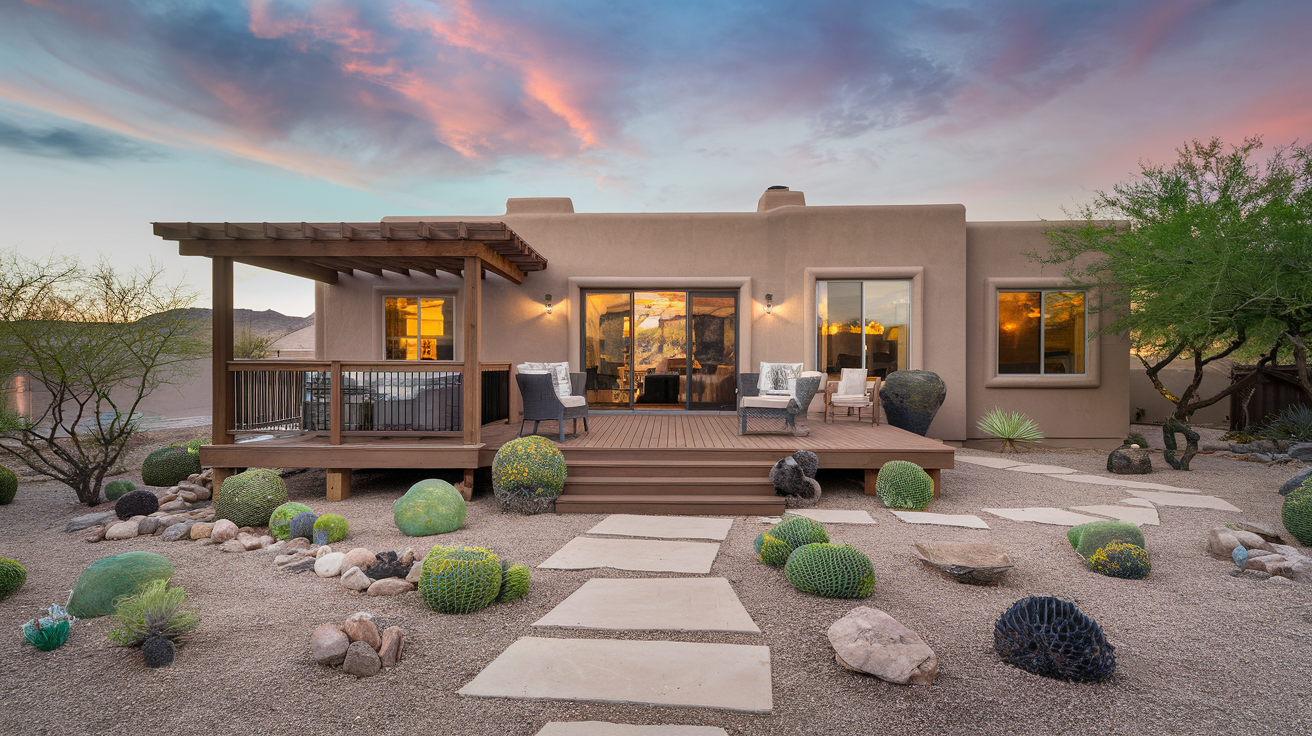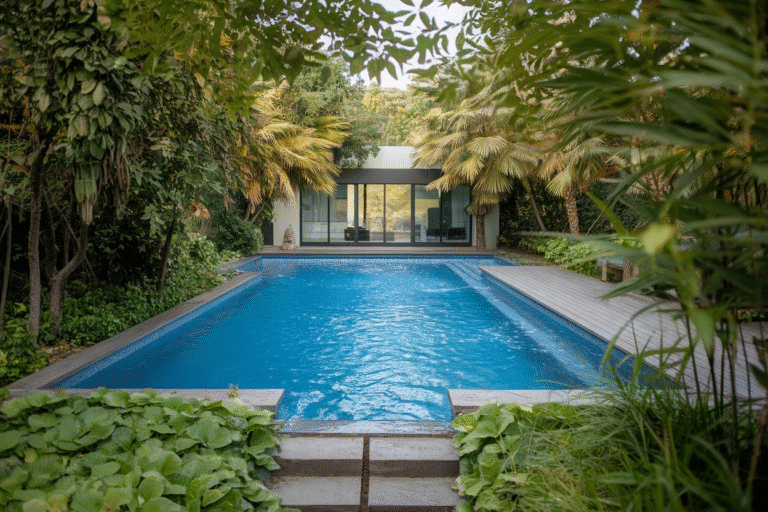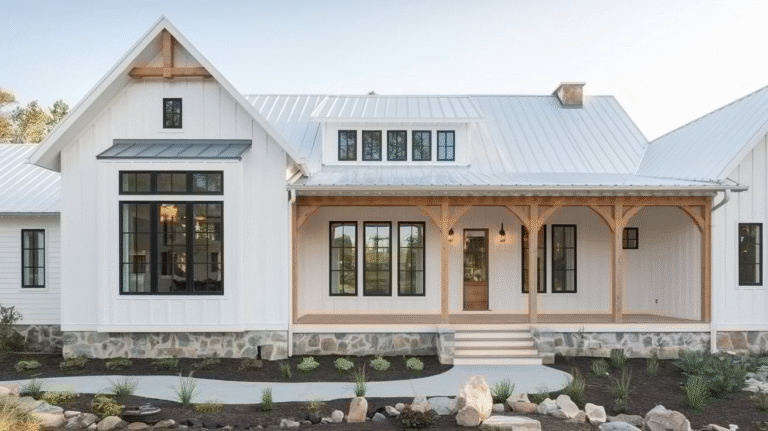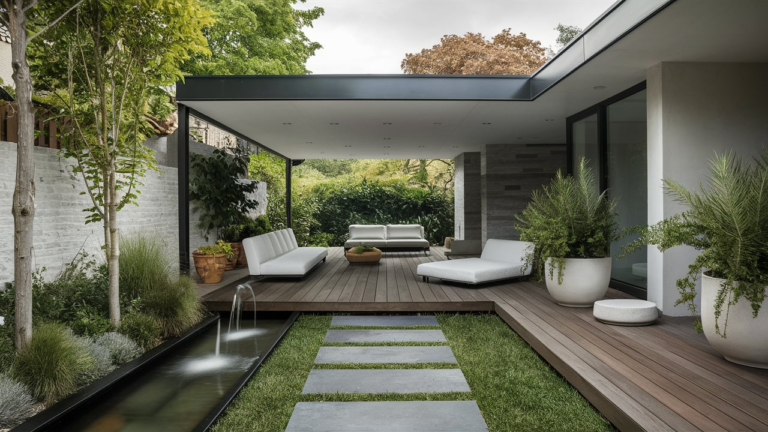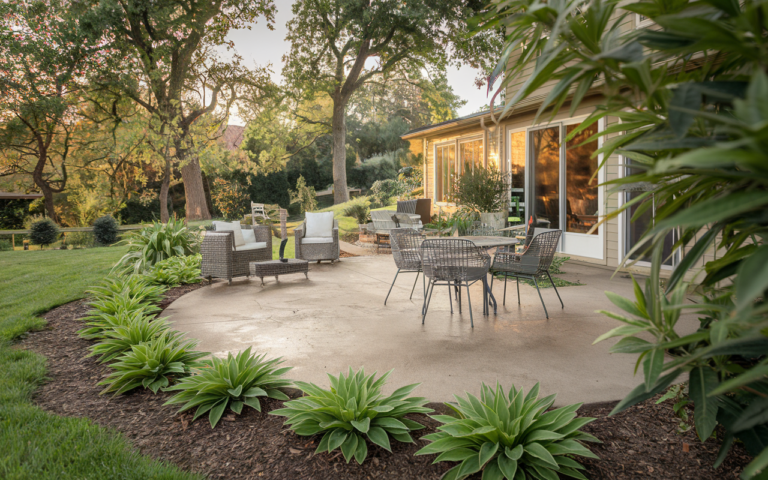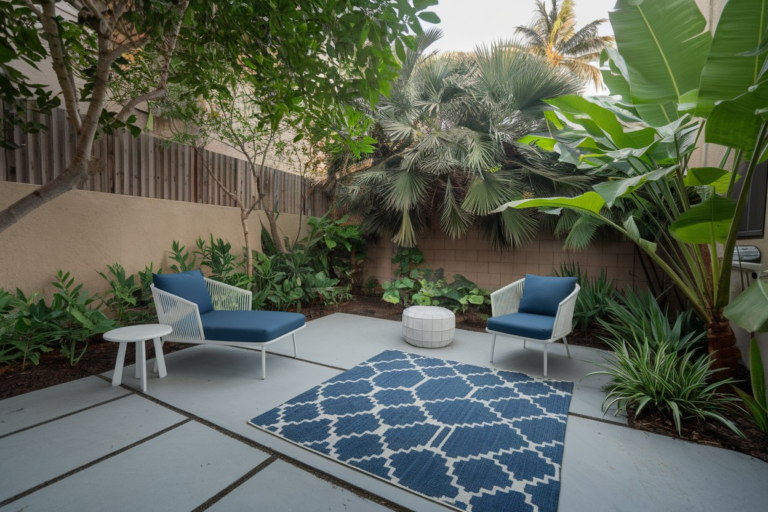24 Desert Landscaping Ideas: Transform Your Arid Oasis
When the sun beats down and the landscape stretches out with dusty expanses, it’s easy to feel that creating a beautiful outdoor space in a desert environment might be an impossible dream. But let me tell you, it’s not only possible—it’s incredibly rewarding.
Desert landscaping is more than just a trend; it’s an opportunity to blend beauty, sustainability, and creativity into a landscape that thrives in hot, dry conditions. Whether you’re dealing with an expansive arid backyard or simply looking to spice up your desert front yard, there’s a desert landscaping idea for you.
1. Xeriscaping: The Art of Low-Maintenance, Water-Wise Beauty
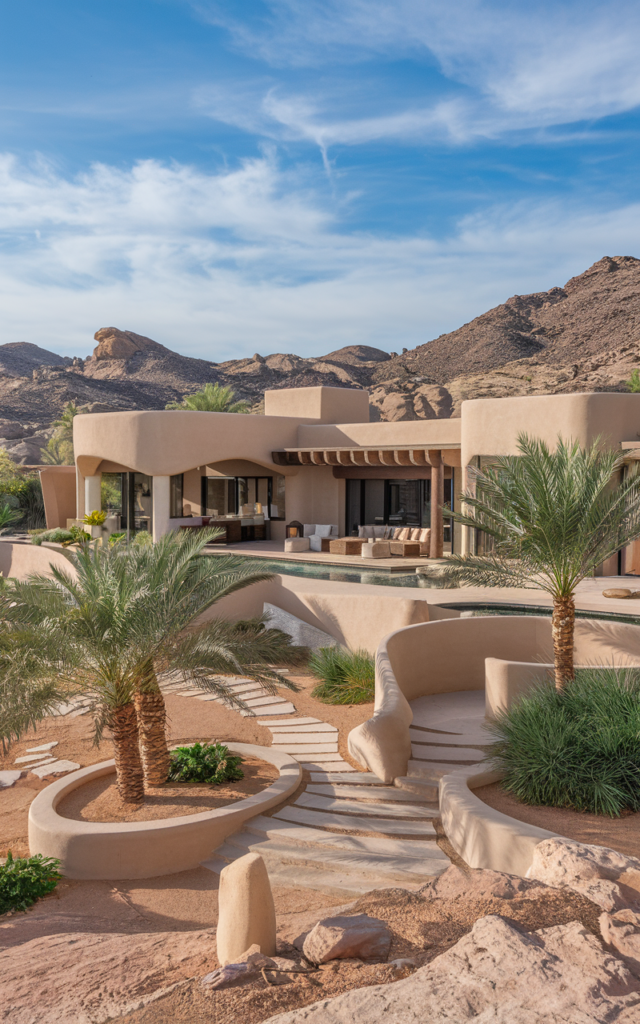
Xeriscaping is the backbone of desert landscaping. It’s not just a technique; it’s a mindset—a philosophy that focuses on water conservation and using native, drought-tolerant plants. The goal is simple: reduce the need for supplemental irrigation and maintain a landscape that still feels lush and alive.
Think of it as creating a garden that knows how to take care of itself. For instance, plants like agave, yucca, and desert marigold thrive in dry conditions and require very little water once established. When you design with xeriscaping in mind, you’re crafting a sustainable, efficient oasis that doesn’t waste water. It’s the gardening equivalent of choosing the right clothes for the climate—you wouldn’t wear a heavy winter coat to the beach, so why plant a water-thirsty garden in the desert?
2. Cacti and Succulents: The Desert’s Sculptural Wonders
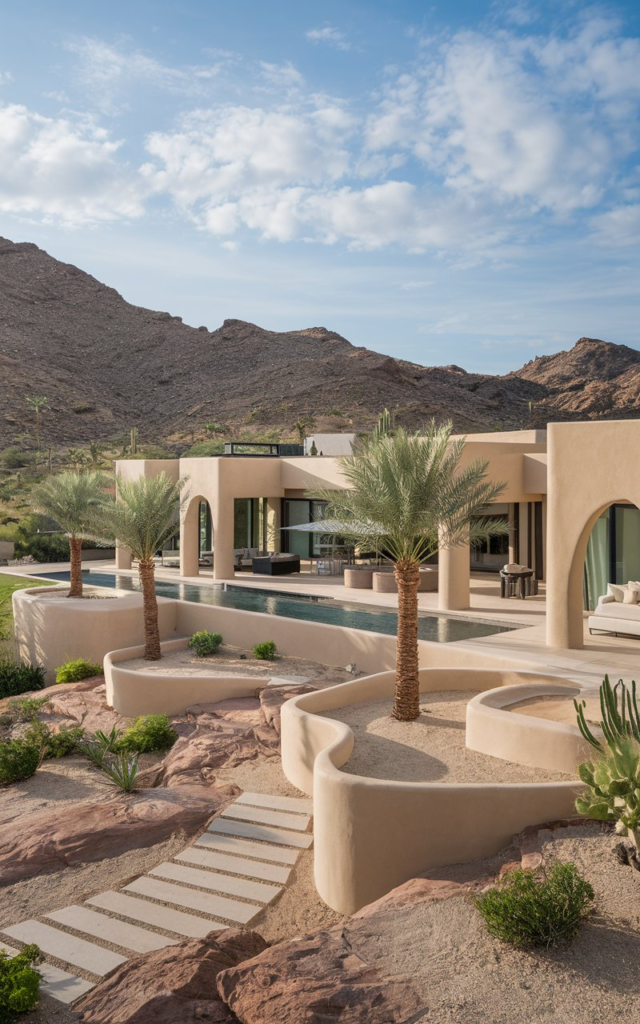
One of the most iconic features of desert landscapes is the cactus. These spiky, sculptural plants are not only hardy, but they also create an incredible focal point in your yard. With so many varieties, from the tall, majestic saguaro to the tiny, whimsical barrel cactus, they offer a wide range of sizes, shapes, and colors.
Don’t just think of them as prickly obstacles; imagine them as living sculptures that shape the mood of your space. Pair them with agave and aloe vera for a contrast in texture and form. When planted correctly, cacti can add a unique element to your garden that will capture the essence of the desert while requiring minimal water and maintenance.
3. Desert Wildflowers: A Splash of Color in a Dry World
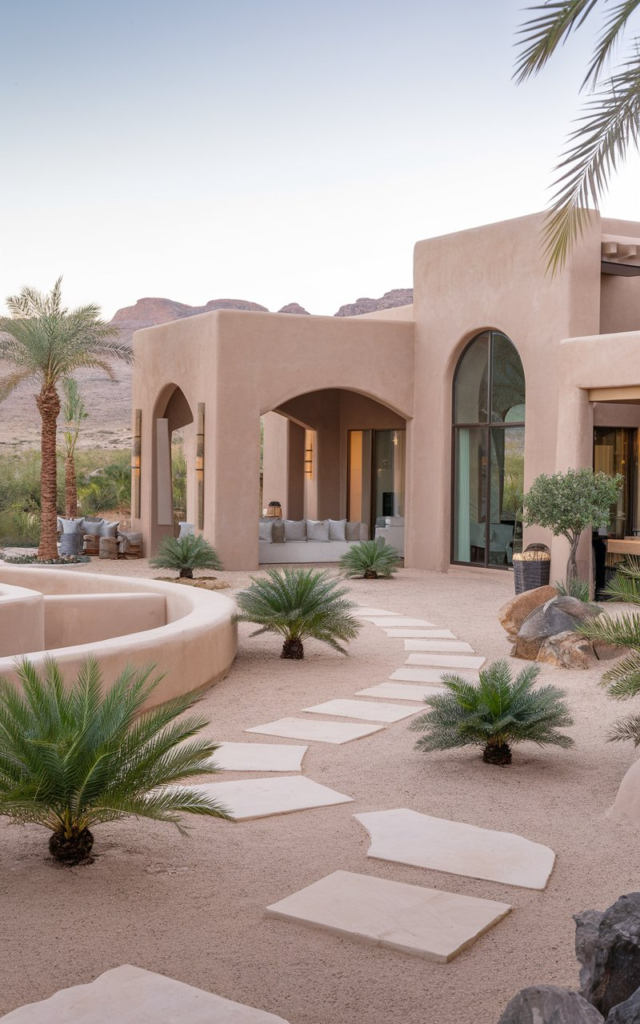
Desert wildflowers are nature’s way of proving that beauty can flourish even in the harshest environments. From the vibrant orange poppies to the delicate lavender blooms of desert sage, these flowers bring unexpected color to your landscape. Planting desert wildflowers can turn your yard into a painter’s palette, offering bursts of brightness among the neutral tones of sand and stone.
The key here is to choose native wildflowers that are well-suited to the desert’s conditions. Wildflowers like the desert lupine or evening primrose require little care, blooming in the cooler months and adding a much-needed pop of color when the rest of the garden is taking a break.
4. Rock Gardens: Turning Stones into Art
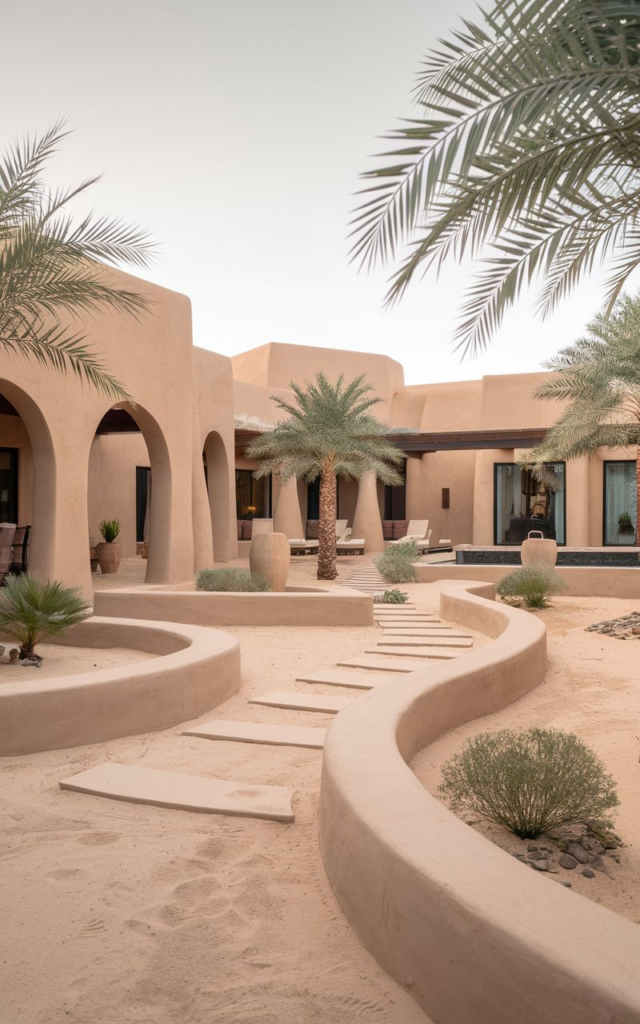
Think of a rock garden as the desert’s version of a zen garden. Rocks, gravel, and boulders are the perfect low-maintenance, high-impact landscaping materials. You don’t need to fuss with watering or constant upkeep—they’re the reliable foundation of a desert landscape.
Large, dramatic boulders can be arranged to create a natural-looking layout, while smaller pebbles or gravel can be used to fill gaps between plantings. A strategically placed rock formation can even create a stunning focal point, drawing the eye across the landscape. Plus, rocks help with drainage, a crucial factor in desert environments.
5. Desert Pathways: Leading the Way in Style
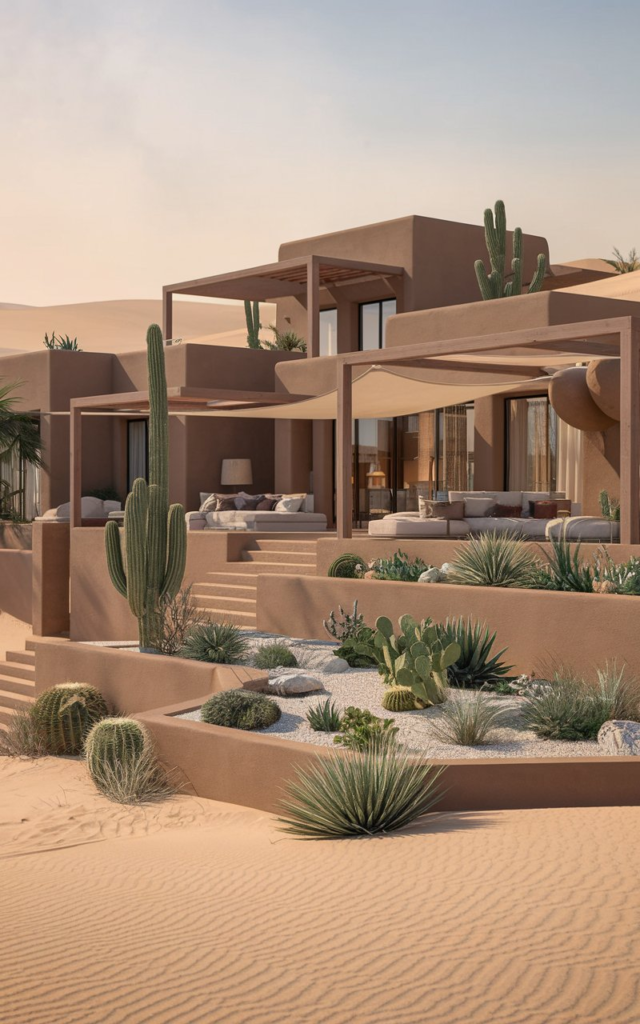
Walkways and pathways are an essential part of any landscape, but in a desert garden, they also serve as a functional art form. Whether it’s a simple gravel path winding through your garden or a more intricate mosaic of stones and pebbles, desert pathways help guide the eye and create a sense of movement within the space.
You can use materials like flagstone, decomposed granite, or river rocks to create a natural, earthy feel. By incorporating these elements into your design, you’re not just getting from point A to point B—you’re adding texture, shape, and flow to your garden.
6. Low-Maintenance Groundcovers: Lush Without the Hassle
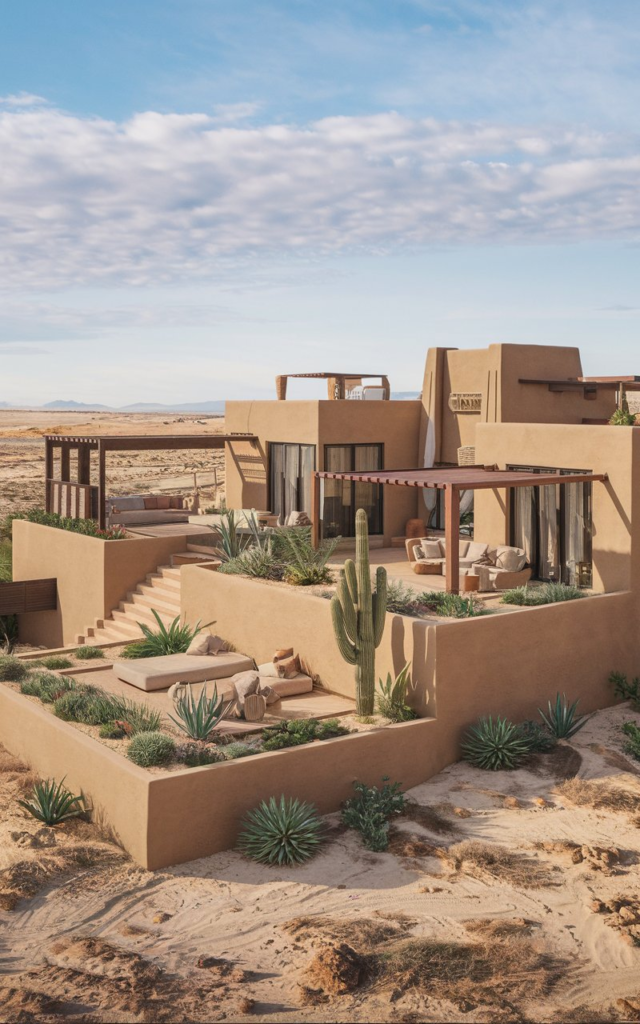
In the desert, lush groundcovers don’t have to be a dream. There are many native plants that can spread across your garden floor, keeping weeds at bay and adding richness to your landscape. For example, creeping thyme, rosemary, and various ground-hugging succulents create a green carpet that doesn’t need a lot of water.
These low-maintenance plants are like the unsung heroes of desert landscaping, quietly doing their job without drawing attention. They’re the reliable friends who are always there when you need them but don’t demand a lot of your time or energy.
7. Desert Trees: Shade and Elegance in the Heat
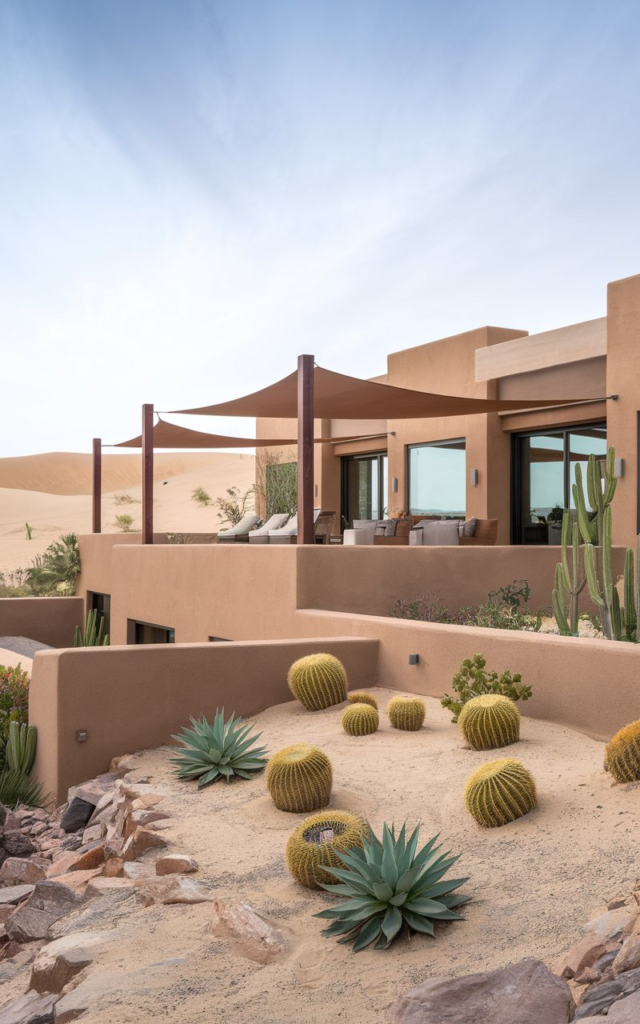
While trees might seem like an odd choice for a desert landscape, they’re actually incredibly effective at providing shade, cooling the air, and enhancing your garden’s aesthetics. The trick is to choose the right species, such as the mesquite tree or palo verde, which are both native to desert climates.
These trees provide much-needed relief from the intense sun, creating cool spots in your yard where you can relax and enjoy the scenery. They also offer vertical height, which is an important design element in desert landscaping, where the terrain tends to be wide and flat.
8. Desert Water Features: The Sound of Tranquility
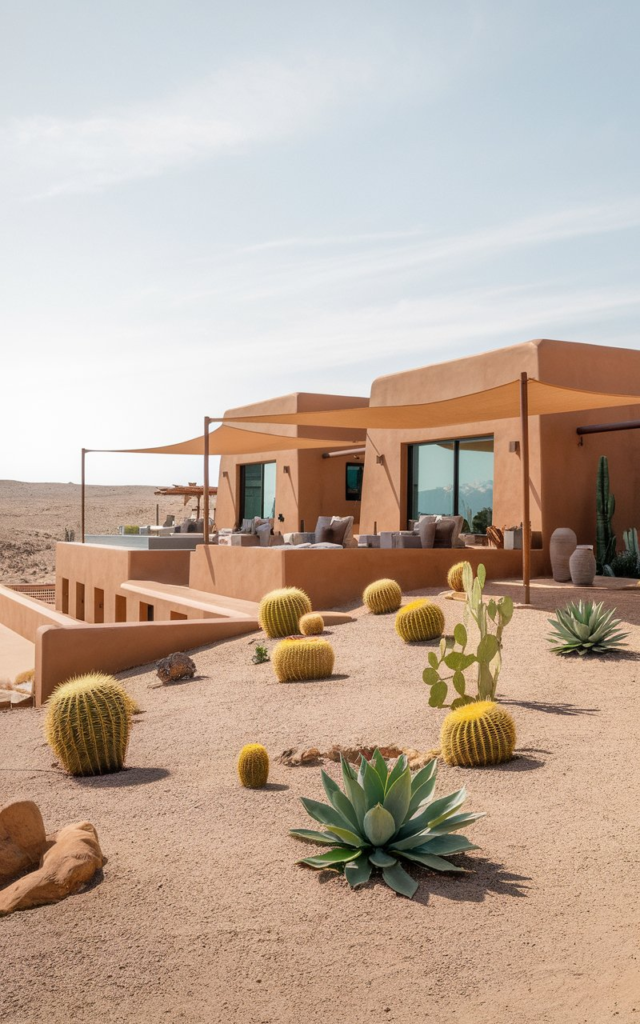
Water in the desert? Yes, it’s possible, but in the desert, water features take on a different character than in other gardens. Instead of lush ponds or fountains that require constant maintenance, desert water features focus on simplicity and efficiency.
A small, recirculating fountain made from natural stones or an oasis-style water basin can add a sense of tranquility without wasting water. The gentle sound of trickling water can transform your garden into a peaceful retreat, inviting birds and other wildlife into the space. These features are like the cool breeze on a hot day—they refresh the spirit without overwhelming the landscape.
9. Meditative Desert Spaces: Creating a Tranquil Escape
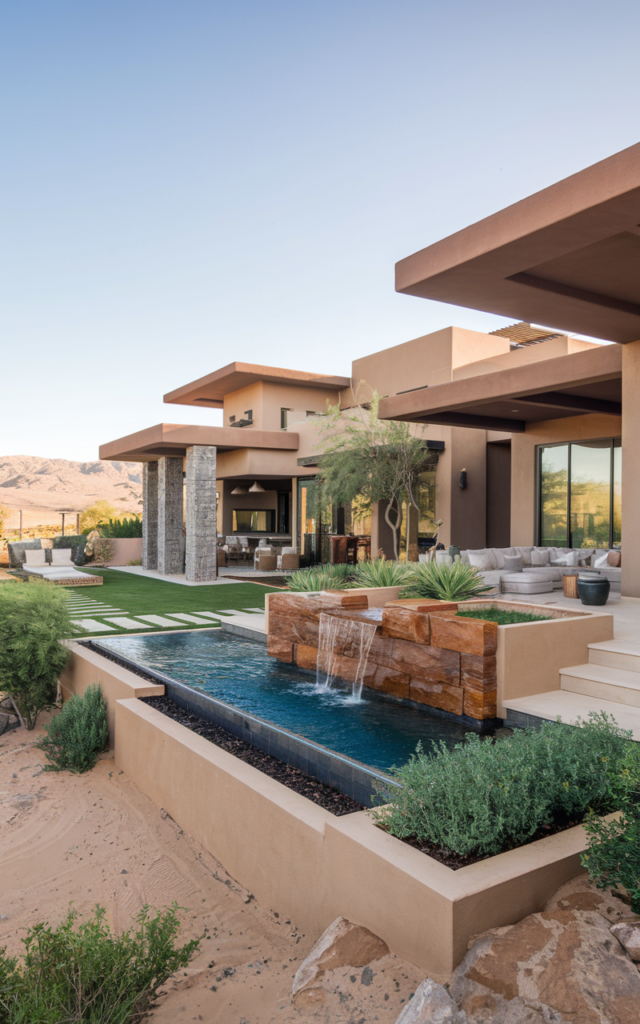
In a world that’s constantly moving, a desert garden can become your peaceful retreat. By incorporating elements like a small seating area surrounded by succulents, a shaded pergola, or a quiet corner with a hammock, you can design a space that encourages relaxation and reflection. A desert garden doesn’t need to be a riot of color and plant life; sometimes, less is more.
Focus on creating spaces that are easy to maintain but invite you to unwind and enjoy the beauty of the natural world. This minimalist approach can also help keep your landscaping low-maintenance while adding a touch of serenity.
10. Sunset Views: Positioning Your Plants for Maximum Impact
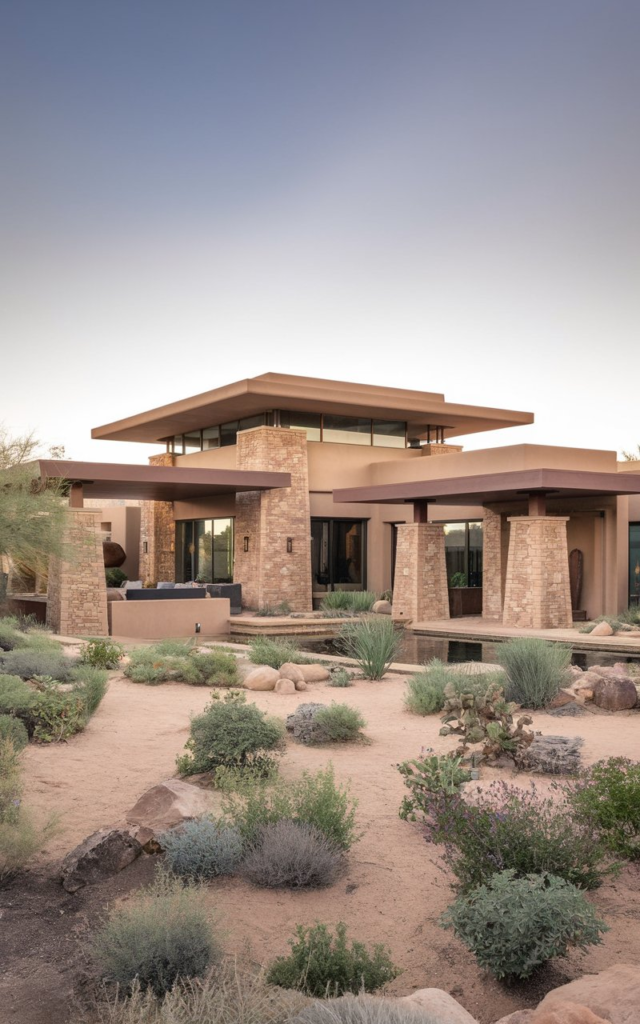
In the desert, sunsets are often nothing short of magical. With a little planning, you can design your landscape to capture the stunning views. Position tall cacti or architectural plants like agave and yucca where they’ll stand out against the backdrop of a colorful desert sky.
The interplay of light and shadow can make your plants appear even more dramatic, casting long shadows across the ground as the sun sets. It’s all about timing and placement—think of it as setting up the perfect stage for nature’s grand performance.
11. Tropical Desert Fusion: Adding a Splash of Paradise
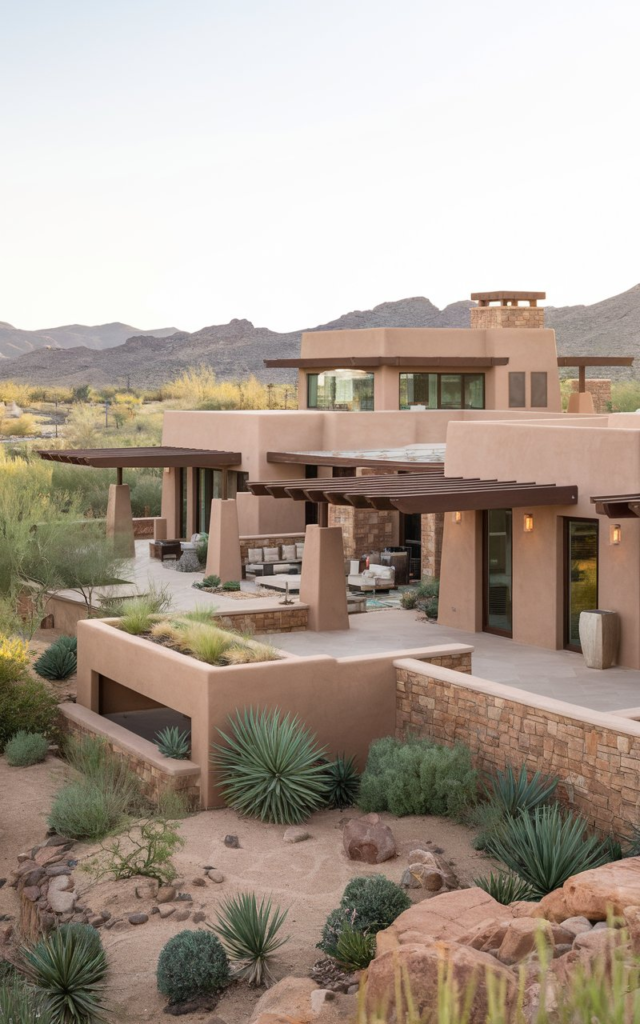
If you’re craving a touch of the tropics, you don’t have to abandon the desert theme entirely. Certain desert plants can be paired with tropical varieties for a unique fusion of styles. Try planting palms, bougainvillea, or hibiscus alongside your desert cacti.
These plants bring lushness and vibrant color, making it feel like you’re stepping into a desert oasis. Just make sure you choose varieties that can handle the heat and are suited to desert conditions.
12. Desert Perennials: The Backbone of Your Garden
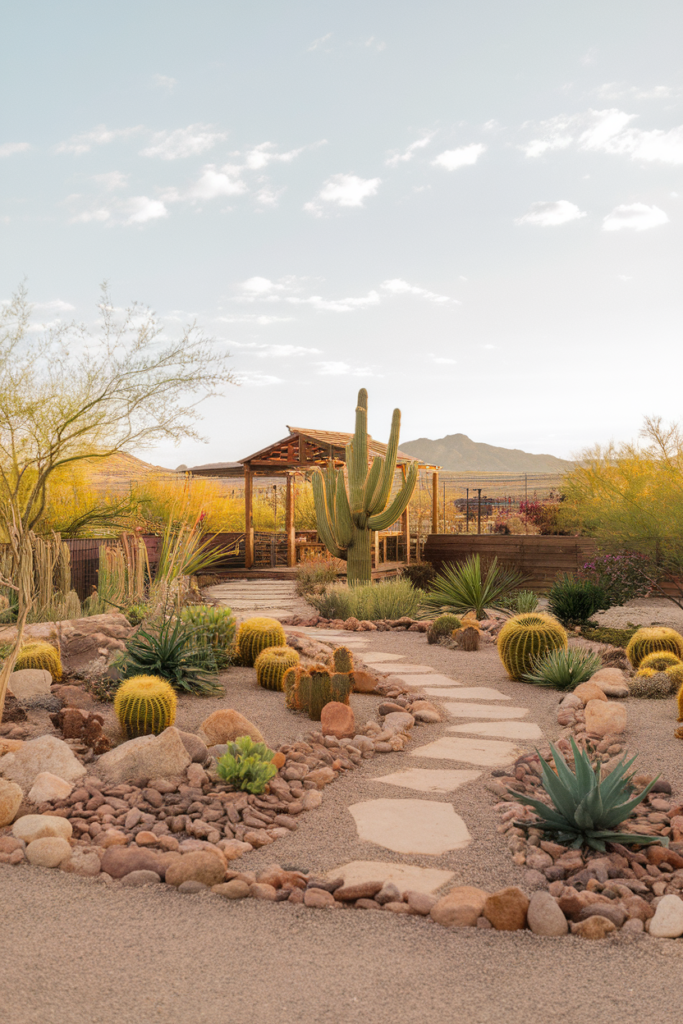
Perennials are the unsung heroes of desert landscaping. These plants come back year after year, providing consistent beauty and structure. Varieties like desert lavender, purple sage, and the striking red yucca can be relied upon to thrive in harsh conditions while adding color and texture to your garden. By focusing on perennials, you ensure that your garden will remain full of life without the constant need for replanting each season.
13. Desert-Focused Outdoor Living Spaces: Blend Nature with Comfort
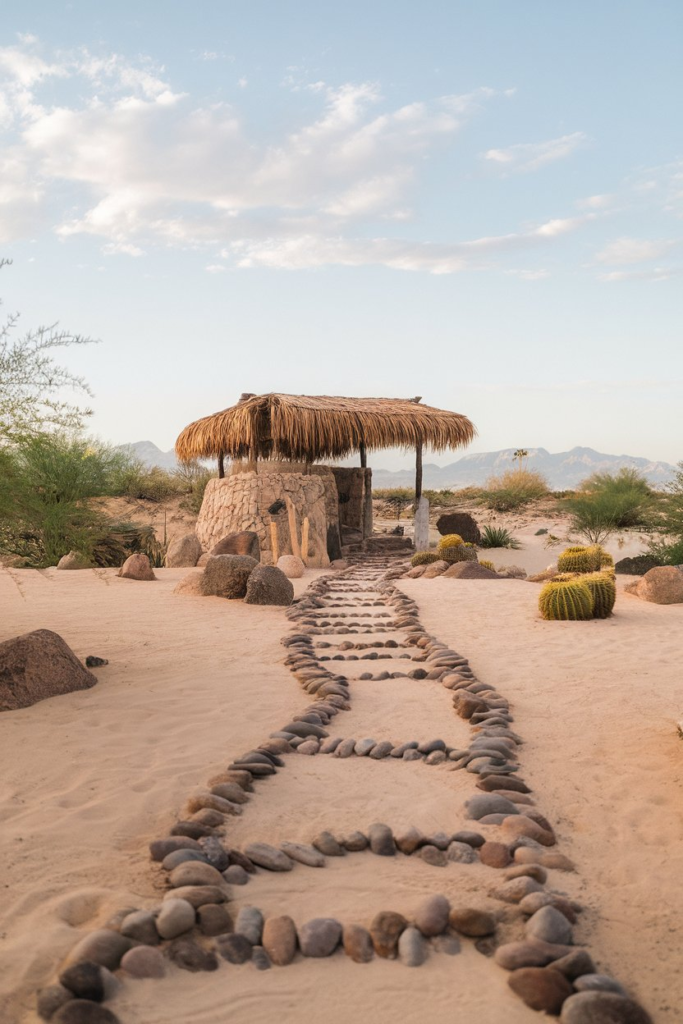
Your outdoor living space doesn’t have to be separate from your desert garden; it can be a natural extension of it. Think about adding a patio made from natural stone or a wooden pergola draped with desert-friendly vines like desert honeysuckle or trumpet vine.
By incorporating these elements into your backyard design, you create a space that blends seamlessly with the desert surroundings while offering you comfort and relaxation. It’s like bringing the inside out—creating a space where you can enjoy the outdoors without sacrificing style.
14. Boulders and Desert Rocks: Nature’s Sculptures
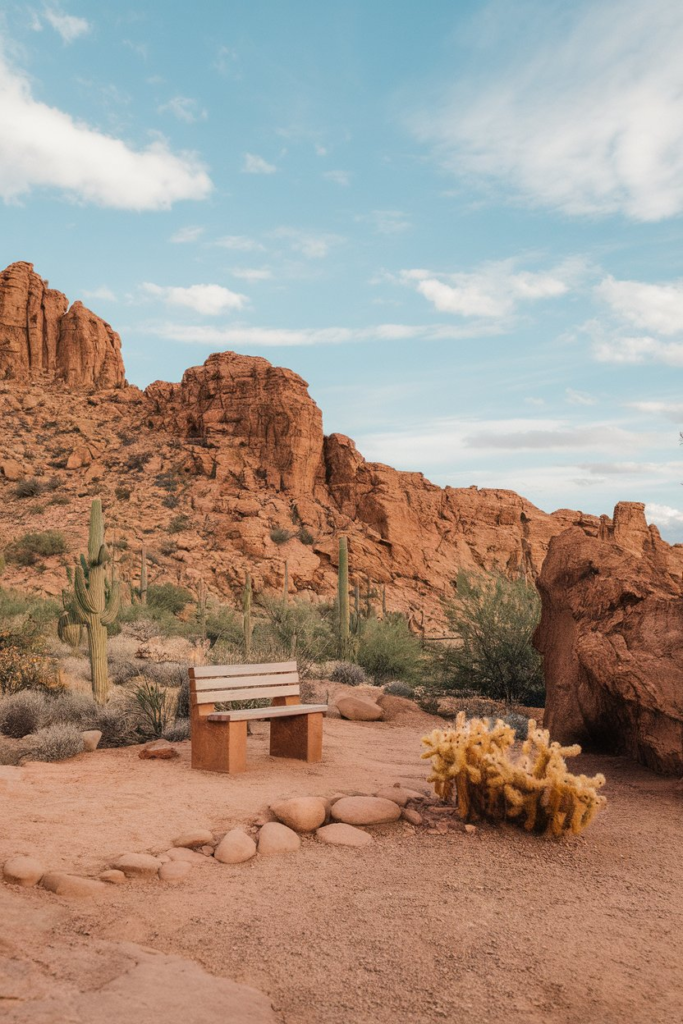
Boulders and desert rocks play a huge role in shaping the look and feel of your garden. They can act as visual anchors, creating a sense of structure and balance. Use large boulders as focal points or scatter smaller rocks and pebbles to create texture and dimension. These natural elements not only enhance the look of your desert garden, but they also contribute to the environment by providing shelter for wildlife and helping with drainage.
15. Desert Edible Gardens: Growing Your Own in the Heat
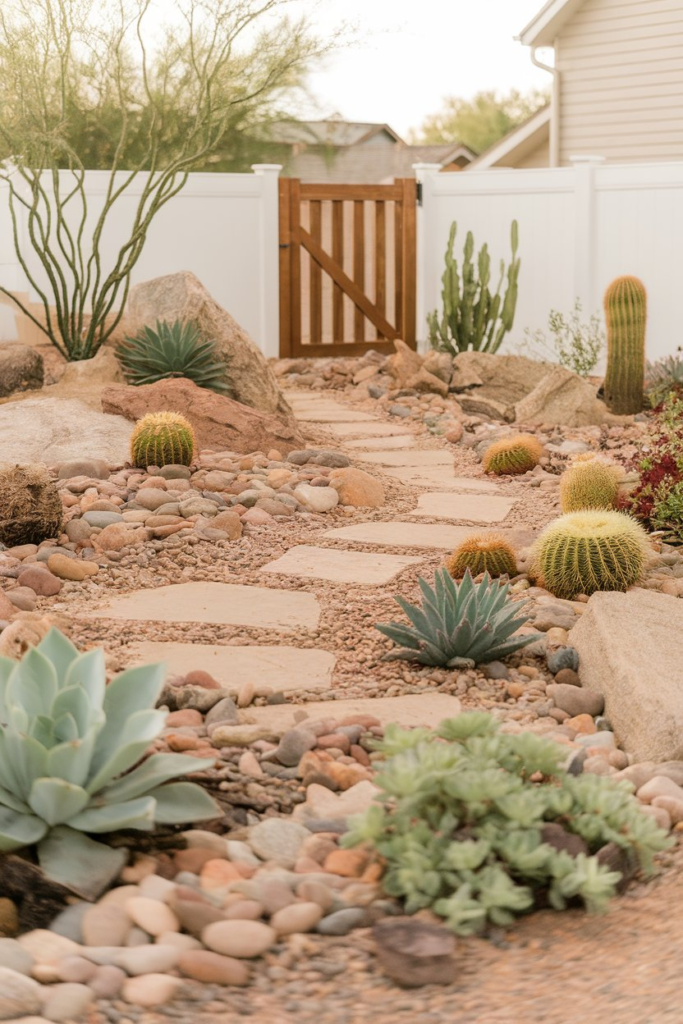
Who says you can’t grow your own food in the desert? With a little planning and the right choice of crops, you can create a thriving edible garden. Plants like tomatoes, peppers, and herbs such as rosemary and oregano are well-suited to desert conditions. Raised garden beds, mulching, and drip irrigation can help you get the most out of your space, ensuring that you’re able to harvest fresh produce even in the hottest months.
16. Contemporary Desert Landscaping: Modern Meets Nature
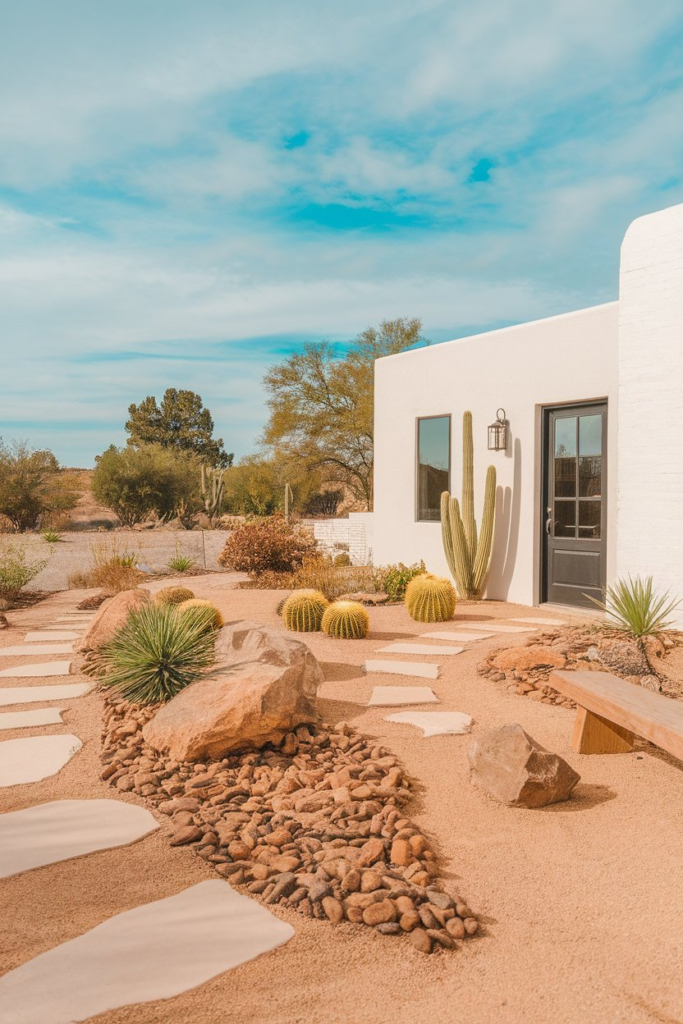
If your taste leans more toward the contemporary, you can still create a stunning desert landscape. Think sleek, geometric shapes, clean lines, and minimalist design. Pair modern planters with desert plants like succulents and agave for a look that’s both cutting-edge and natural.
The key is simplicity—using a limited color palette and focusing on form and texture rather than overwhelming the space with too much greenery. This creates an elegant, refined look that works beautifully in a desert setting.
17. Cactus Gardens: Creating a Prickly Paradise
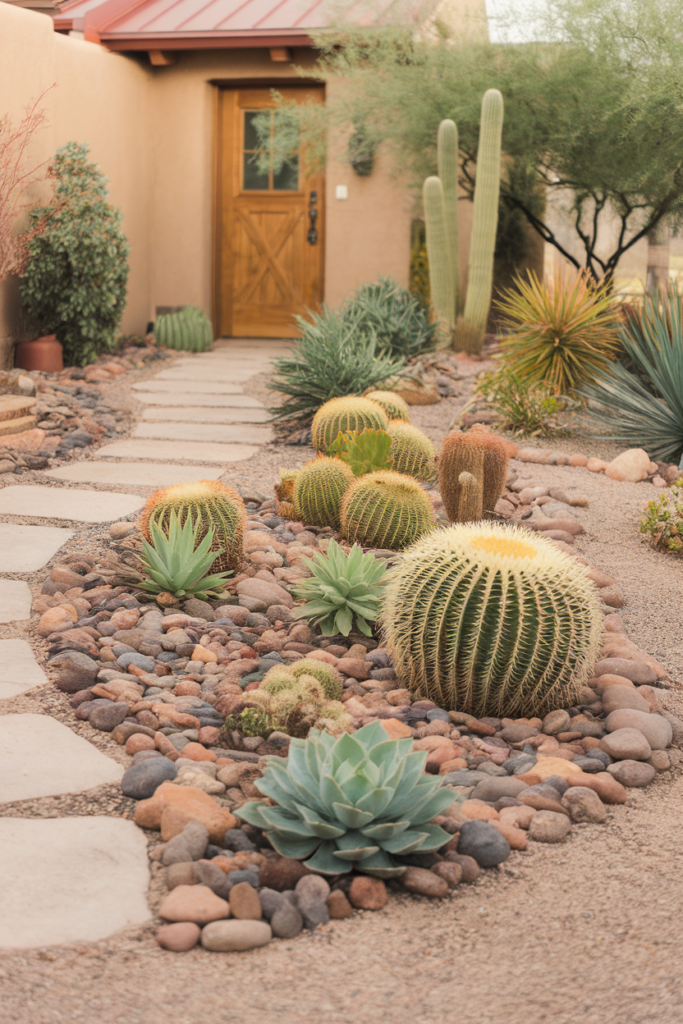
If you’re a fan of cacti, why not go all in and create a cactus garden? Cactus gardens can range from small, intimate spaces filled with miniature species to expansive areas showcasing towering saguaro cacti. By selecting a variety of species, you can create a diverse garden that plays with form and color. Grouping cacti together allows you to create a bold statement, making the most of their unique shapes and textures.
18. Native Plants: Embrace Your Local Flora
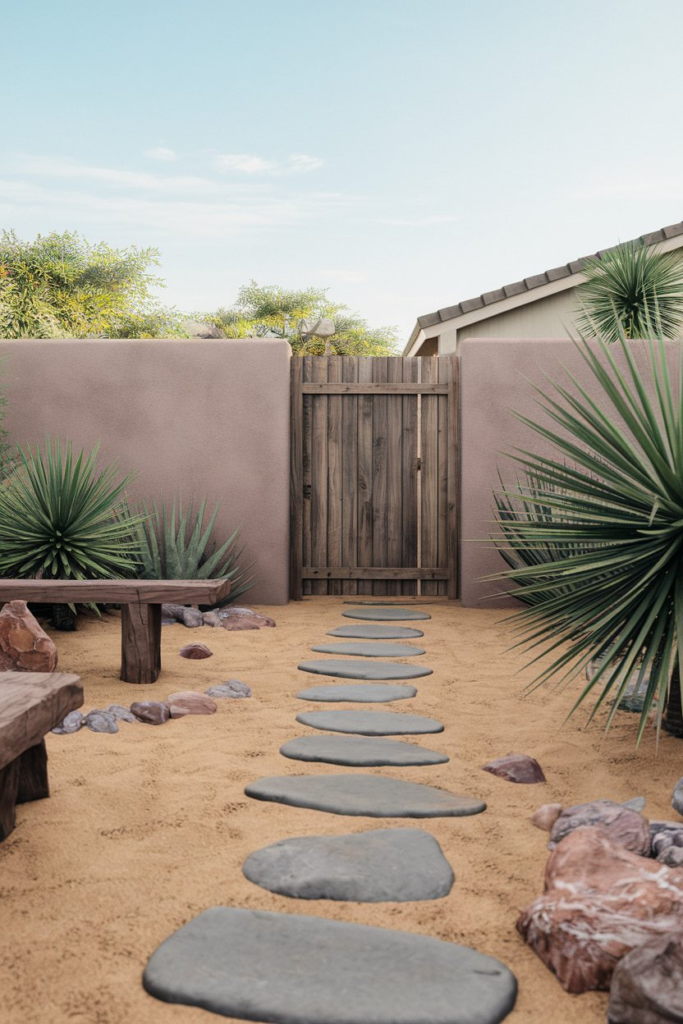
When it comes to desert landscaping, native plants are your best friend. They’ve evolved to thrive in the harsh desert environment, meaning they’ll require less water and care than non-native varieties. Local plants like creosote bush, desert marigold, and Indian paintbrush bring the spirit of the desert into your garden, offering beauty and resilience. They’re like the community members who’ve been living in the area for generations—well-suited to their surroundings and able to handle the challenges of the climate.
19. Outdoor Lighting: Illuminating Your Desert Garden
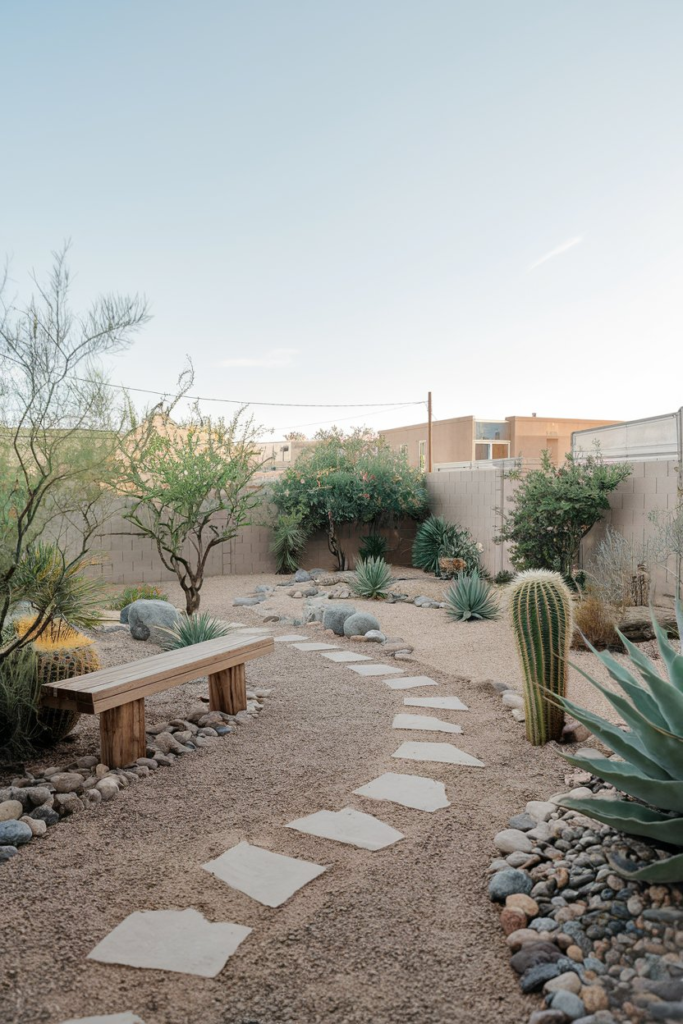
Desert gardens come alive at night with the right lighting. Use subtle, warm-toned lights to highlight key features like cacti, rocks, and pathways. This not only adds beauty but creates a magical atmosphere.
Solar-powered lights are an eco-friendly choice, allowing you to light your garden without running up your electricity bill. The right lighting can transform your garden from a daytime retreat to an enchanting evening haven.
20. Sand and Gravel Landscaping: Embrace the Dryness

Sand and gravel are quintessential elements in desert landscaping. Whether you’re creating a zen-like gravel garden or filling in gaps between plants with fine sand, these materials offer both practicality and beauty. They allow for excellent drainage and can be used to highlight plantings or create clean, minimalist lines. Sand and gravel are the silent partners in your garden’s design—they’re understated yet essential.
21. Desert Design for Small Spaces: Making Every Inch Count
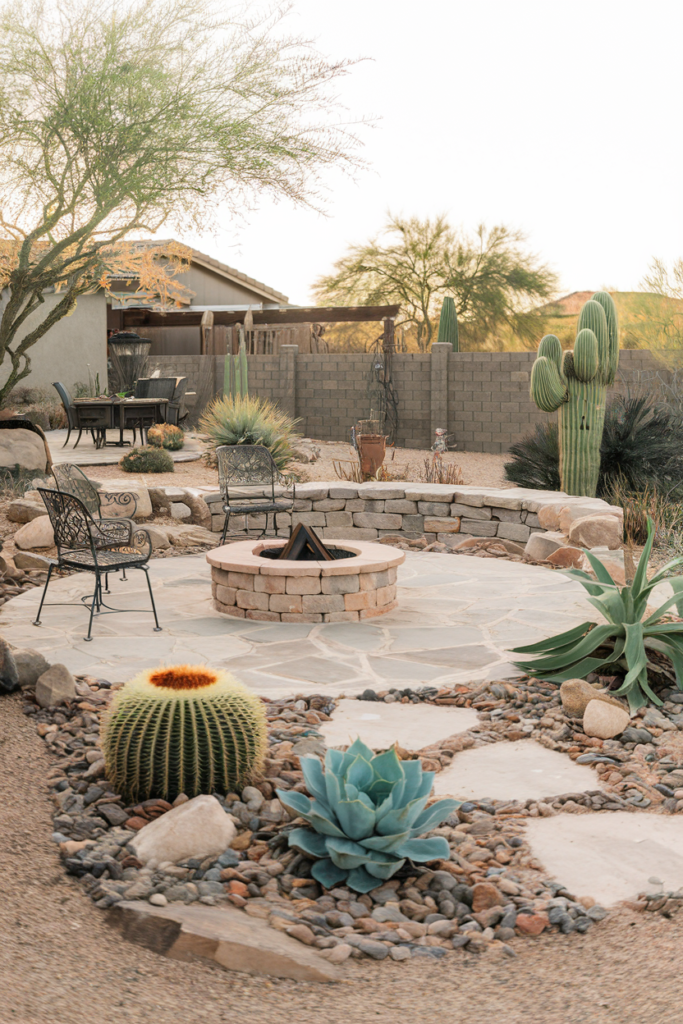
Even in a small desert garden, you can incorporate all the beauty and functionality of a larger landscape. Use vertical elements like trellises or wall-mounted planters to save space while still adding greenery.
Compact desert plants like dwarf cacti or succulents can be grouped together in containers, creating an intimate and stylish garden that thrives in a limited area. This is where smart design comes into play, turning even the smallest space into a desert paradise.
22. Desert Shrubs: Small but Mighty
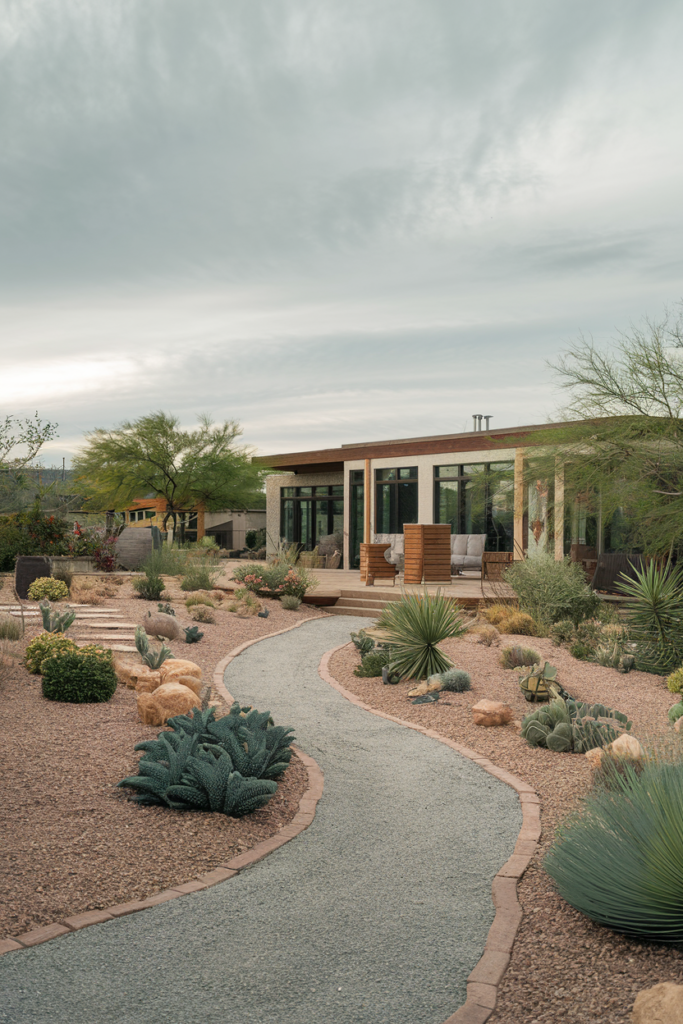
Shrubs might seem like a small player in the desert landscape, but they play a crucial role. Shrubs like the desert broom or jojoba plant are hardy, low-maintenance, and offer texture, structure, and even fragrance to your garden. They fill out the space between taller cacti and provide a green, bushy contrast to the more sculptural plants. They’re the sturdy support team that helps keep everything in balance.
23. Creating a Sustainable Desert Garden: Less Is More

The key to desert landscaping is sustainability. By using native plants, minimizing water usage, and reducing the need for maintenance, you’re not just creating a beautiful garden—you’re contributing to a more sustainable world. Incorporating sustainable practices into your design can help preserve the natural beauty of the desert while creating an outdoor space that’s as eco-friendly as it is stunning.
24. Desert Landscaping as an Expression of Identity
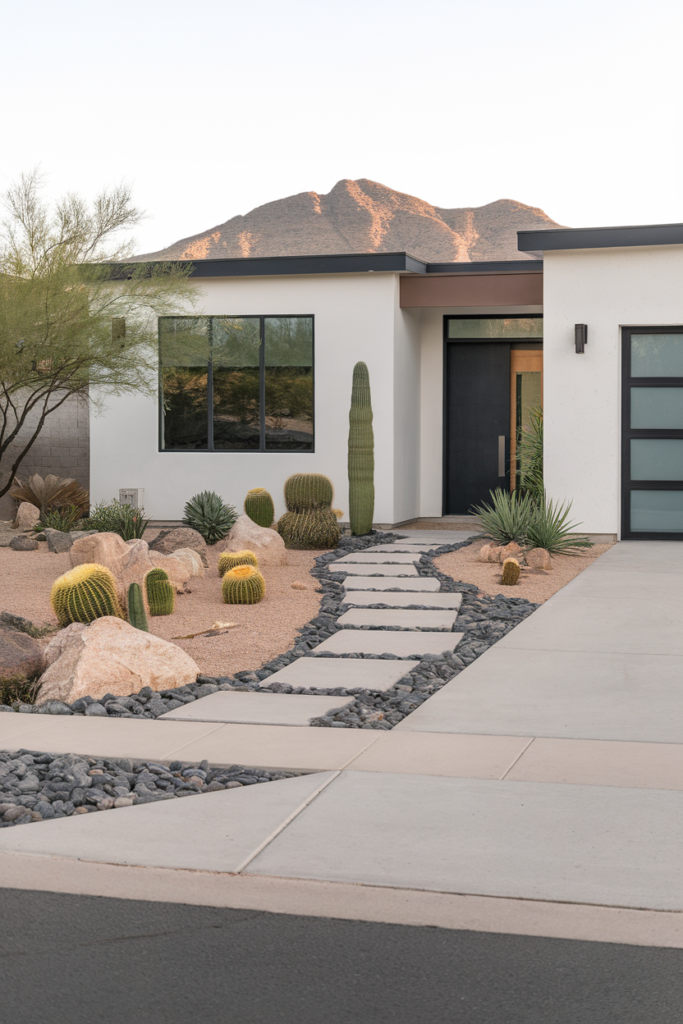
Desert landscaping isn’t just about planting the right plants—it’s about creating a space that reflects your personality and lifestyle. Whether you want your garden to feel like a serene retreat, a bold statement, or an extension of your home, desert landscaping can become an expression of who you are. So take your time, experiment with different plants, and remember that your desert garden is a canvas—paint it with the colors, shapes, and textures that make you feel at home in the desert.
